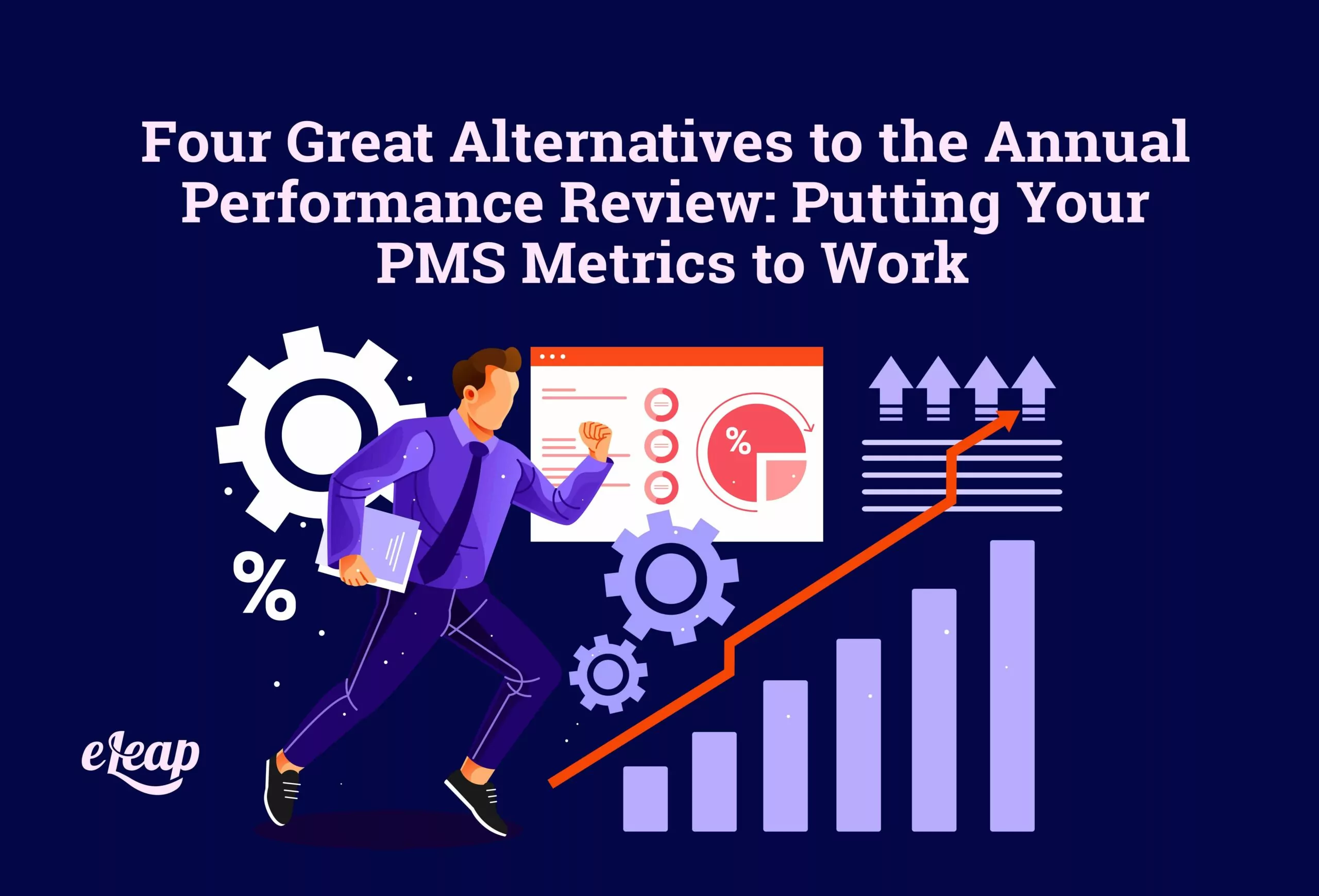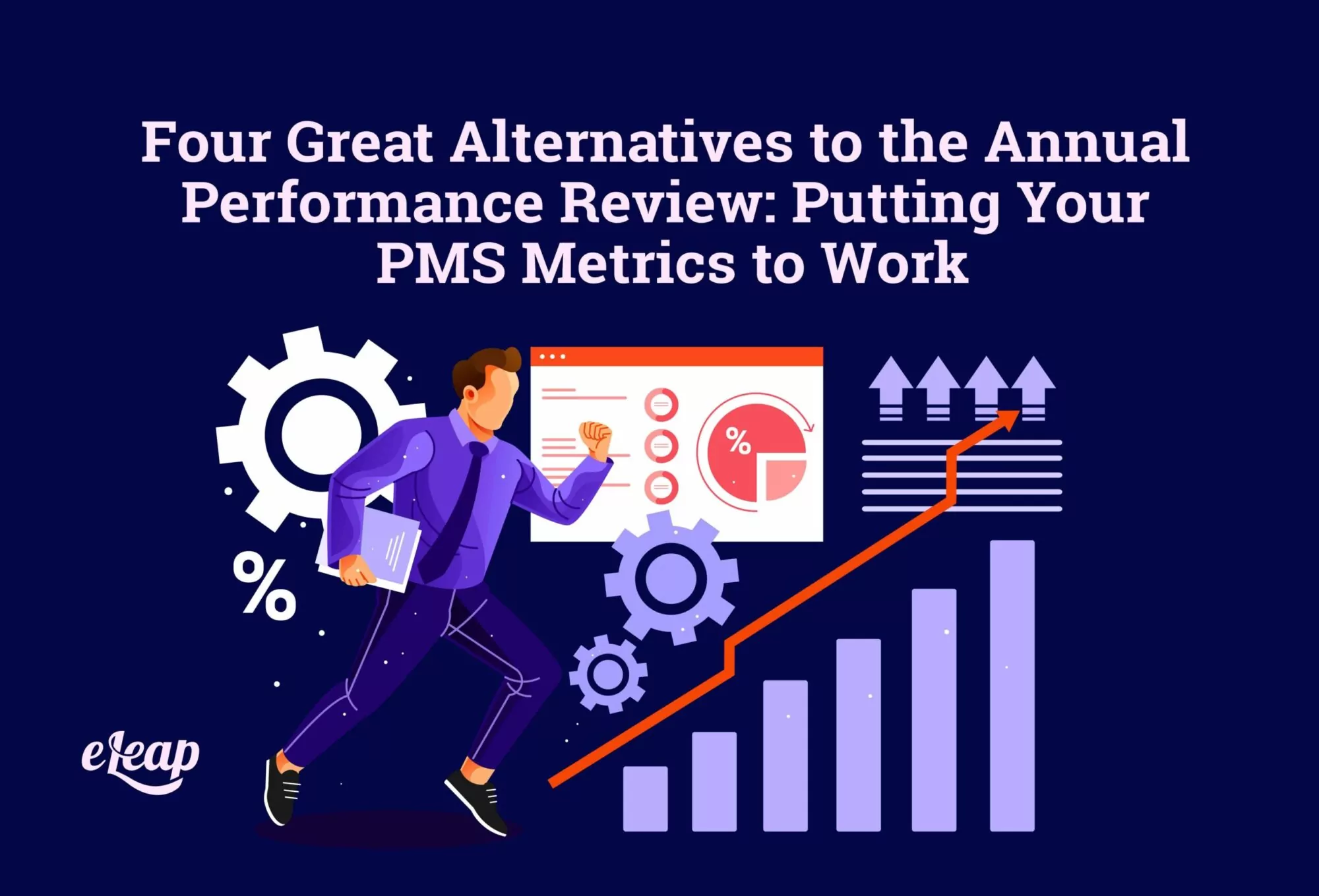Four Great Alternatives to the Annual Performance Review: Putting Your PMS Metrics to Work

The performance management system has a lot of value for an organization. Primarily, it’s how you put the information that you gain to use that will benefit you the most. Specifically, it’s time to get rid of the annual performance review (if you haven’t already) and come up with better ways to monitor, collaborate on, and accomplish employee goals and metrics. Many organizations have switched to a more open format of feedback that is sort of an ongoing thing. That’s great, but there is also the need for at least a little more structure in helping people grow and develop within the organization.
Here are four ways that organizations are utilizing their metrics and their creative strategy skills to approach employees and handle performance management in an entirely new way. Annual performance reviews are no longer the way—they focus too much on reactive measures and trying to “fix” performance problems after the fact. Proactively, companies can do more to keep their employees on track and improve their performance for their own sake and the sake of the organization.
Organizations need to get creative and utilize the tools they have, including their PMS, to take a proactive, holistic approach to performance management. Here are four alternatives to help you get started.

One-on-Ones (Regular)
These can be weekly check-ins or even monthly, but they need to happen much more frequently than once per year. An informal setting is best, allowing both parties to reflect on their current skills and how things have been going, as well as whether they are on track for reaching their goals. Some companies have informal one-on-ones on a daily basis to keep people on track, but that might be a little more than some need.
In any case, taking a one-on-one approach and doing so proactively will help foster strong relationships and encourage your people to thrive and grow in their roles.
Project-Based Reviews
This is another great organic way to check in on people more frequently than once a year. If your organization works on a project basis, you can always schedule check-ins and reviews as part of the project execution and follow-up. This is a great way to ensure that everything is on track and that things were completed in a timely manner. It also allows you to direct comments and discussion among the entire group involved in the project, focusing on collaborative upskilling and improvements based on what’s currently being done.
These reviews are helpful because they can also ensure that projects are on track and things are getting done efficiently. It’s a natural space to provide feedback and encourage a discussion with your team to guarantee that everyone is on the same page.
Milestone Check-Ins
Much like project check-ins, these are another great organic way to get your team involved in paying attention to how they’re doing on the job. When you create strategies and development opportunities for different roles, and help them with goal setting, you will reach milestones and goals over time. Taking a minute to utilize these accomplishments to also see where future changes could be made or processes could be improved is going to help everyone in the organization.
Plus, instead of waiting a year to talk about all the projects and milestones someone has accomplished, you are approaching them in real-time and providing direct feedback so that they can grow immediately instead of reactively making adjustments later.
Group Accountability Check-Ins
This is a great way to get everyone involved and talk about how they are doing and where they can make improvements. Utilizing the metrics from the PMS, you can even pair people who have skills they can share with someone who needs them, assign accountability partners, and so much more. Perhaps you just start and end the day with a little meeting that addresses who accomplished what or which people have hit their various goals. It’s about making continuous improvement a constant, not a topic for when problems arise.
What Metrics to Use
Business is no longer a numbers game—it’s a people-focused approach to delivering products and services that the world needs. However, the caveat is that there are still valuable metrics that you can use to ensure that those people are on the right track and living up to your company standards. With a PMS, you should be able to monitor just about everything, including:
- Goal achievement and progress
- Customer interaction skills
- Reviews
- Input and output
- Quality and outcome
- Efficiency
Anything else that’s related to performance that is going to help your organization and its people step up their skills and get more out of their professional endeavors will also be good to add to this list. Remember, it’s about personalizing a solution for each employee so that development and growth work for them as a part of their career path.
Fortunately, the modern PMS makes it easy for you to monitor and discuss all kinds of metrics and performance issues. Utilizing these types of performance review sessions will allow people to make changes and course-correct immediately so that they can perform better in the future, both for themselves and for the organization.
Real-Time Feedback Gets Real Results
Any organizational leader or HR professional will tell you that employees don’t want to sit down and talk about what they did wrong last year—they want to know as they go. That’s where having a PMS and a more proactive approach to reviewing performance can make such a big impact. When you embrace your PMS and all its features, you will be able to create unique monitoring and reporting solutions for every team and individual within your organization.
There are several other ways that you can incorporate feedback and help your people embrace a proactive performance culture. Plus, when you step up your game here, you’ll have one more attribute to offer prospective job hunters. This can drive your organization into the future and ensure that you find the best talent from the start.